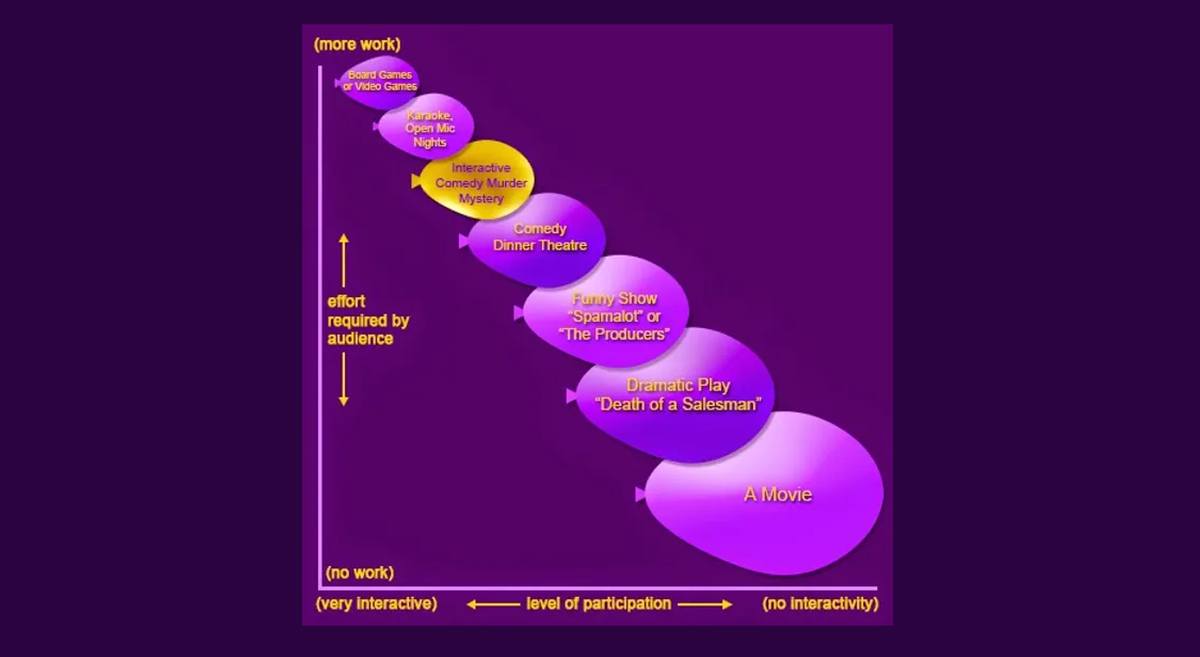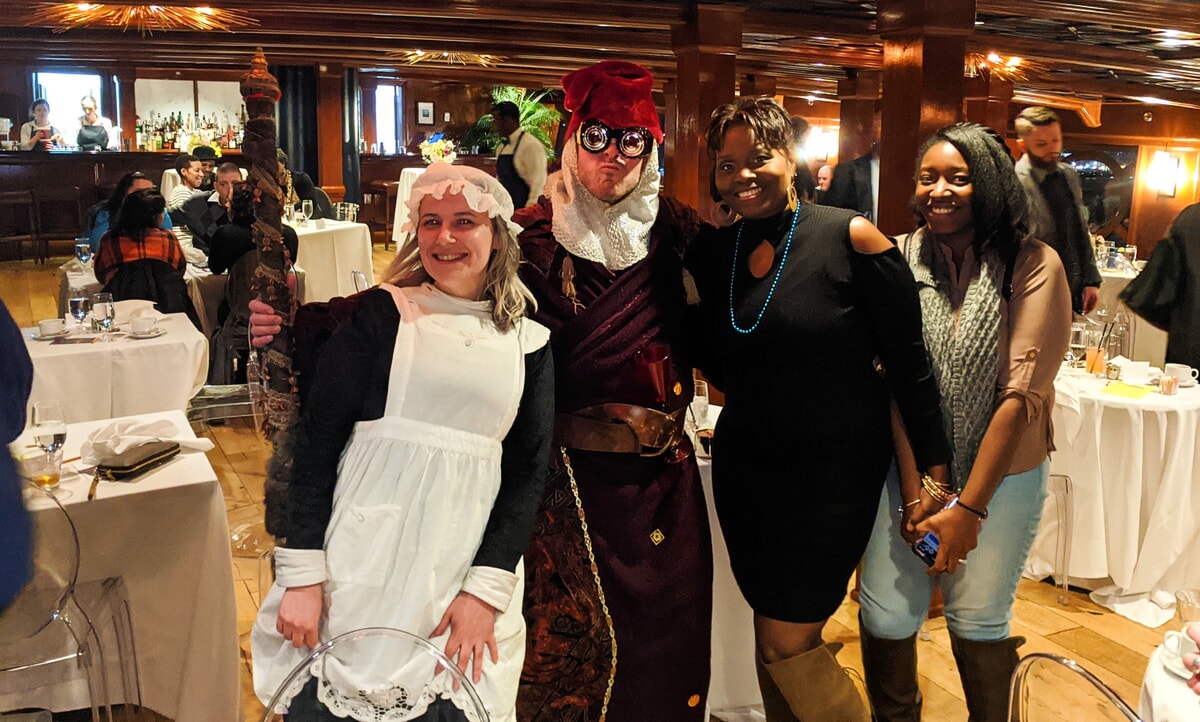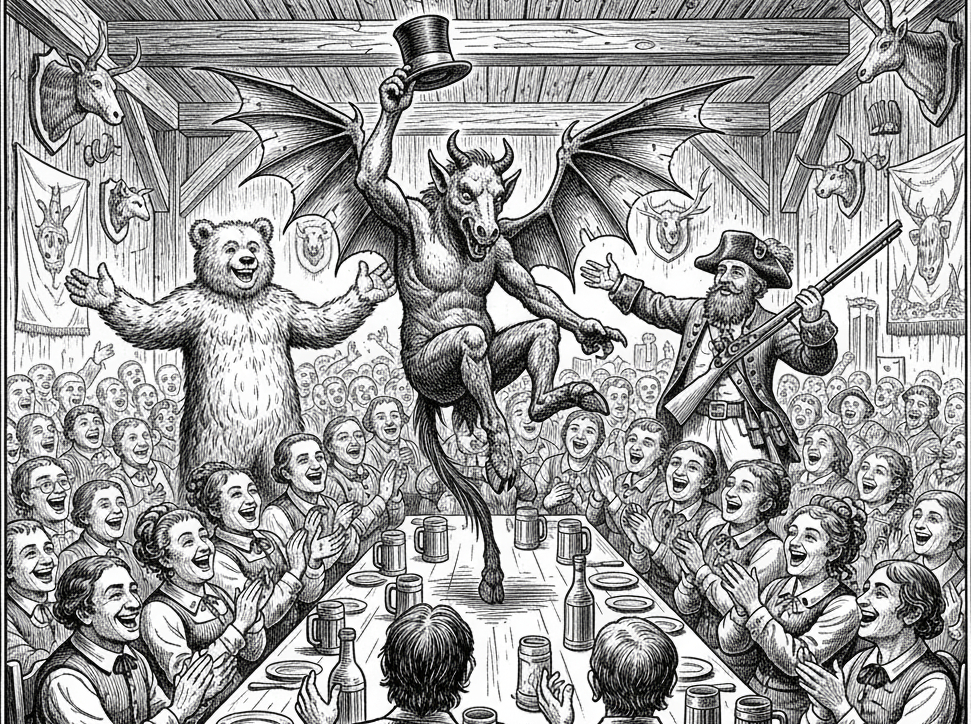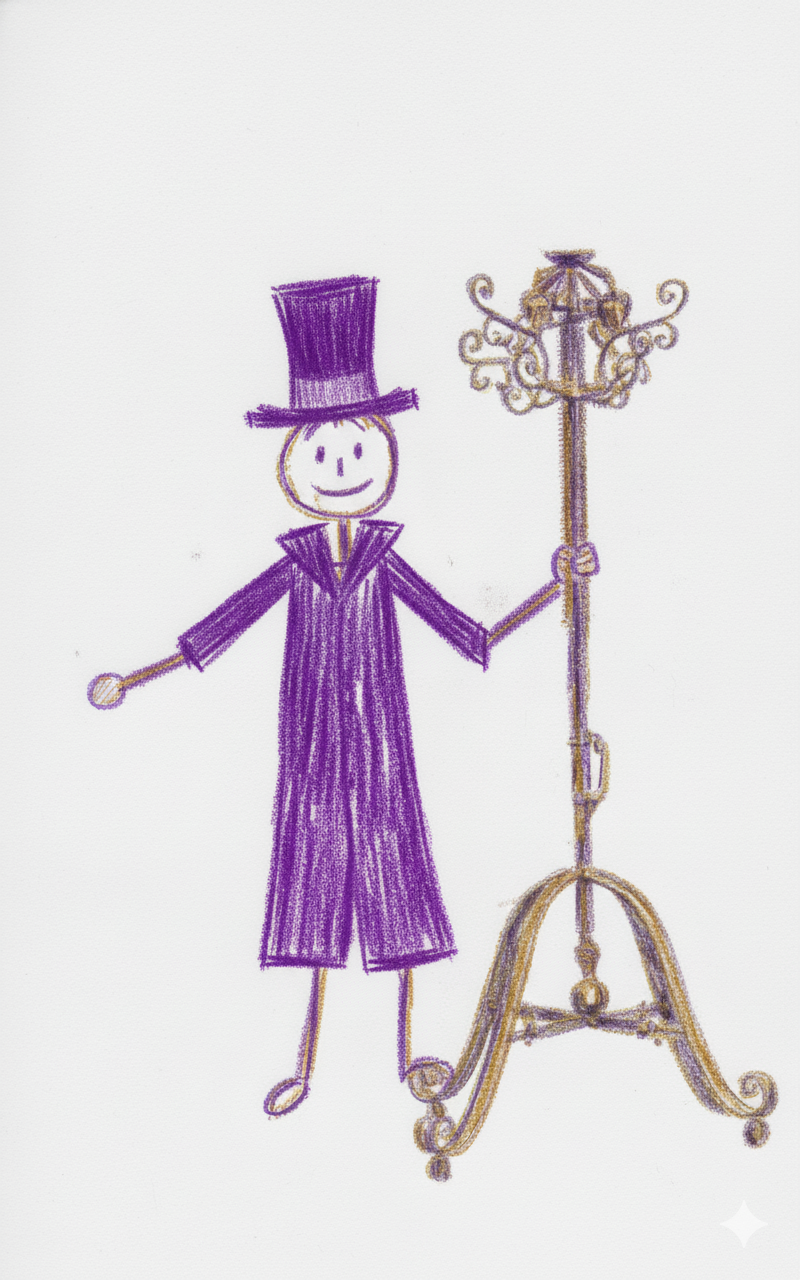Clyde P Riddlesbrood
7 years ago
What the heck is “Audience Interactive” anyway?
There has been quite a bit of chatter online in the entertainment world about audience interaction, audience participation, engagement and the like. There are about as many different terms as there are definitions which has contributed to a lot of confusion about what exactly audience interaction is; not to mention how it effects an evening of entertainment. Murder mystery companies specifically have latched onto the phrase and profess audience interaction to be a universal good while other more traditional theater troupes decry it as cheap and amateur.
A General Guide to Measure Interactivity
The truth is that it is neither. First let us nail down some terminology. Audience interactivity (I will use this term for ease here, but many others would be acceptable) is live entertainment where the audience is expected to “DO” something. They are requiring to “ACT” in some form whether it be small or large. This would be opposed to the more traditional passive audience where they merely sit and observe. While this can serve as a general definition, it is quite flawed when one understands that unlike say a movie, all theater is interactive in the sense that the actors are playing to them directly. The audience can laugh, clap, heckle and the performers can react. That point aside, there can be a very big difference between watching a show like “Death of a salesman” and watching Karaoke.
We all intuitively recognize that while both are live entertainment, only in the second example would the audience actually get up and perform. That is the difference that most think of when talking about audience interactivity. A definition based on how much effort an audience needs to do.
So now that semantics are out of the way, we need to ask what makes a show interactive—specifically. There are many ways that this can be accomplished. In some shows the audience members are literally given out parts to read, in others the audience might be taken up on stage as a volunteer similar to a magic act. Still other shows gather information about guests prior to the show and work them in during the performance. Some shows may ask the audience to provide input into the story such as in theater sports Improv groups. Most murder mystery companies drop clues throughout the show and the crowd is expected to put them together at the end and fill out a form attesting to who the true killer is. At Disney, they have the budget to allow the audience to actually sit in a car and move through the show; blurring the lines between an amusement ride and a performance. There are in fact so many different methods to interact with the audience that I cannot state them all here. The point is to know how it is done, and how often it is employed during the show. Which brings us to the next question.
Audience member called up to Volunteer- What are the Pros and Cons? Here is a short list of some of the positives and negatives about audience interaction.
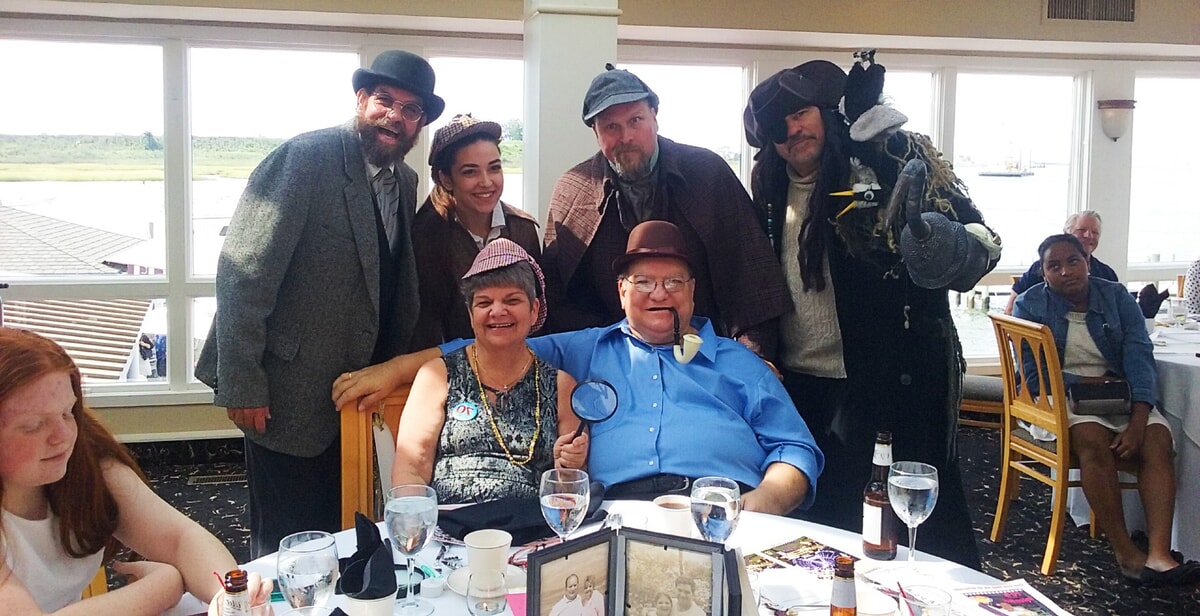
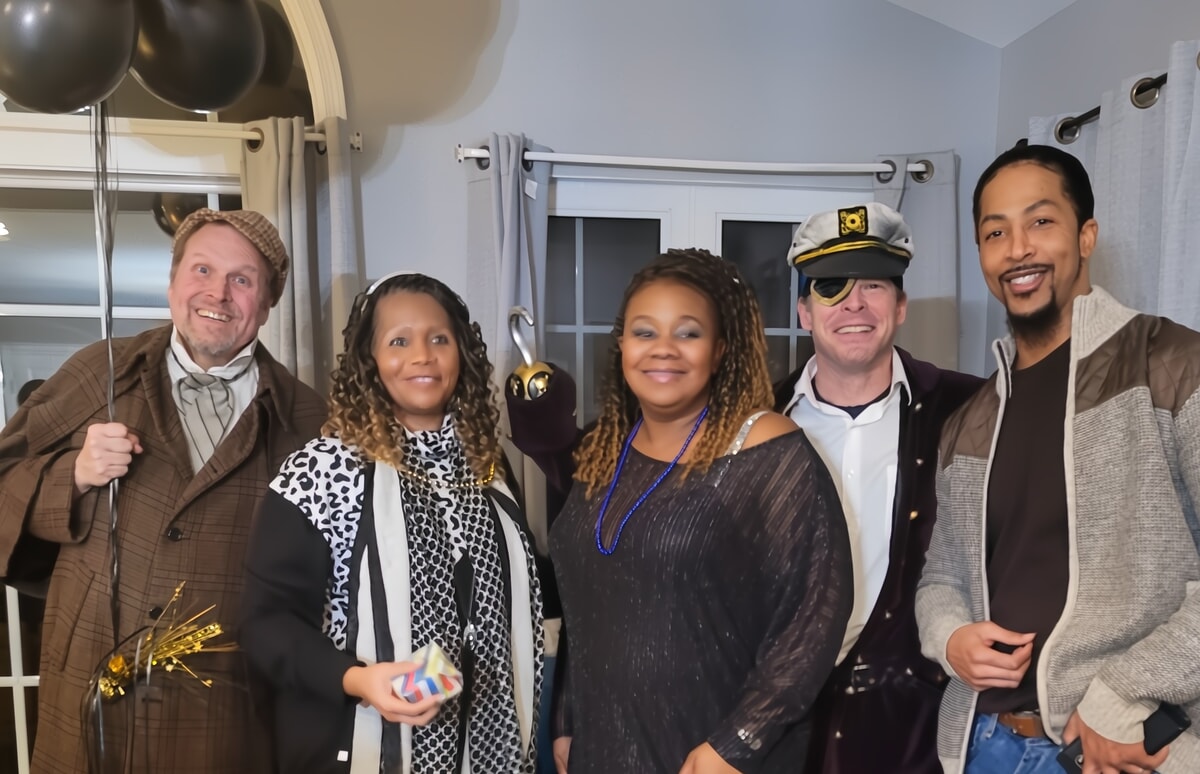
Now! The good stuff!
Audience gets the feeling of “Playing” in the show
Some members of the audience get to stand out (Extroverts love this)
There is more randomness and therefore more excitement
The audience gets to laugh as others are put on the spot
Participation leads to bonding and the audience will feel more like there are part of it all
The event will be more about “Them” instead of the play itself
The not so good stuff
Requires audience to work—they can’t just sit there
Shy or reserved people may grow fearful of being “Picked”
An audience may refuse to participate, which will undermine the interactivity and therefore the whole event
Raises the possibility of embarrassing or rude remarks from audience
Political correctness may impact audience interaction in some situations due to fear of expressing opinions in front of bosses, or coworkers. This is especially true for formal company parties.
No return—once the show is interactive, it is near impossible to roll it back if poorly received
How much interactivity is a good thing?
Answer? It depends on demographics. The makeup of the audience dramatically dictates how interactivity and the comedy is likely to be received. It might be easy for a company to say “Our shows are interactive” but that says nothing about how much so. Likewise, the reverse question of “How much is too much?” is not straight forward either. For example, if your event is a young, party atmosphere and the mood lends itself to mingling and excitement; more audience interactivity is likely to be a good thing. Conversely, if your event is for seniors and the atmosphere is more formal than high levels of interactivity may be received negatively. They may have no interest in getting up out of their seats, reading lines, or thinking too much—they might WANT to be passive. So, the reality is audience interactivity is not good or bad in any universal sense; a party planner has to pick the right tool for the job to achieve success.
So, beware of any company who acts as if interactivity is simply a good thing, and asserts the more interaction the merrier. Likewise, it should raise a red flag when a company tells you that interactivity is bad— under the right conditions it will make an event a super success. Ask questions, probe into HOW the audience is involved and find out how much of it will take place. Most good entertainment companies can meter the amount of interactivity to fit the situation. You know your audience better than anyone, and you will know if what their describing is a good fit for your event.
If you would like someone to go over more information about an event you’re planning, give us a call. The Riddlesbrood Touring Theater Company has done thousands of events since 2000 and we have the experience to guide you through the process and find the right entertainment for your event. Reach out to us today!
